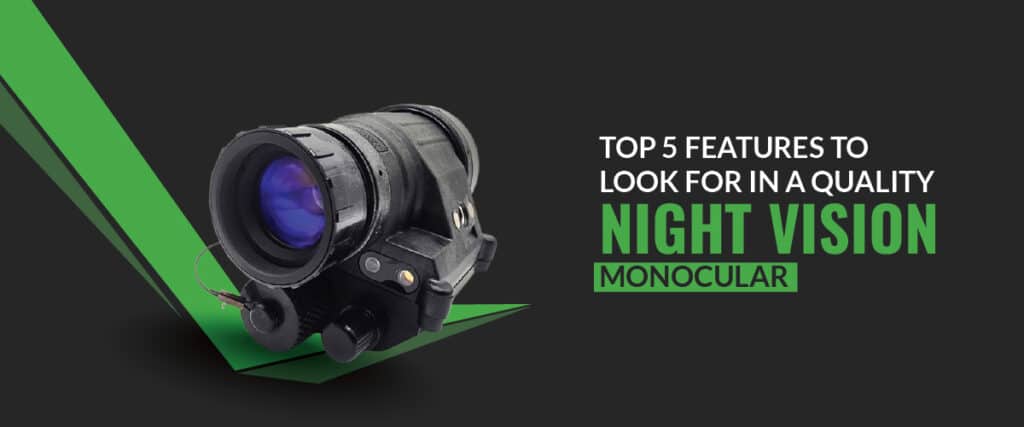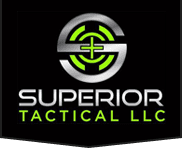Top 5 Features to Look for in a Quality Night Vision Monocular

Night vision monoculars are great devices for any outdoor activity, and especially for those who hunt, work in security, or are wildlife enthusiasts. They allow people to see in low-light situations, so darkness can become an asset in your pursuits instead of a disadvantage. However, with so many night vision monoculars on the market today, how can you choose the best one for you?
Image Clarity and Resolution
The most important feature in any night vision monocular is the clarity of your image. An effective monocular will provide you with a clear and visible view of your surroundings (at least close to full darkness), which is directly correlated to the resolution of the monocular’s image sensor and display screen. The better the resolution, the better the images. As hunters often use night vision monoculars to identify targets during a night hunt, they need to be able to see sharply. This is also true if the monocular is used in a security context, as the trained eye needs to see the correct image they are monitoring. When looking for and comparing monoculars, ensure you find one that has a resolution of at least 640×480 pixels for Gen 1 devices, and increasing upwards to Gen 2 and Gen 3. Gen 2 and 3 will typically provide clearer images with higher light amplification, but less gain.
Infrared (IR) Illuminator Strength
Using an integrated infrared (IR) illuminator greatly enhances night vision performance in total darkness. This illuminator is like an invisible flashlight; you can’t see the light directly, but the monocular shows it to you. The IR illuminator improves your view whenever there is not enough ambient light. The most significant indicators of monocular quality are its IR illuminator strength and range. The more adjustable options or increased power ratings you have for the IR settings will only increase your chances of seeing better, particularly when you are working in absolute darkness, such as in very dense forests or a seemingly isolated and remote trail. Some high-end models have detachable power or upgradeable IR illuminators that, if not purchased with the original device, can be added later to increase the total distance of effective sight.
Magnification and Field of View
The next thing to consider is the compromise between the amount of magnification to use versus the field of view (FOV). While more magnification allows you to zoom in on a distant object, it also reduces how much ground you can view in the same time frame. For most of the outdoor applications for which the monocular has some applicability, you will be using a 3x to 5x powered monocular, which likely won’t restrict you too much. Given the intended use of the binocular, you will have sufficient zoom to identify an object, but won’t have difficulty scanning movement in a landscape at long distances. A wide FOV is convenient for search and rescue missions and for nature viewing. Choose the best type of monocular that fits the application and environment.
Battery Life and Power Options
When you are in the field or are on surveillance, having a dead battery is likely to ruin your mission. Quality night-vision monoculars are designed to provide extended battery life, often rated at anywhere from 8–20 hours of use based on how you plan to use them and IR settings. Rechargeable lithium-ion batteries are great for regular users, AA batteries are reliable and convenient, plus easy to source. Some devices are fitted with USB-C or solar-charging options too. Before any purchase, ensure that you check whether the device permits hot-swapping batteries or has alerts for low battery.
Durability and Weather Resistance
Second, as night vision monoculars are often utilized outdoors, durability is an important consideration. Your device should function under rugged conditions, such as drops to the ground, rain, dust, and extremes in temperature. Choose models that have rubberized armor or reinforced casing for your device to be able to withstand the physical elements. Waterproof and fog-resistant night vision monoculars will minimize mayhem from unpredictable weather. Take the time to have a look at the IP rating (Ingress Protection), which rates the water and dust resistance of a device; IPX6 or better would be recommended for outdoor use.
The Finale:
Always keep in mind what you are using it for, whether for wildlife viewing, for night patrol for security, for tactical operations, you need to make an informed, responsible purchase for the use that best fits your needs, versus all features available and the best prices. Having the right monocular in hand means that the dark no longer has to be a hindrance but instead an advantage.
